According to SnatchBot, 80% of businesses and educational institutions anticipate employing chatbots by 2023.
Chatbots for education offer many benefits to students, educators, and institutions alike. According to Chatbots Life studies, 68% of teachers agree that chatbots can help personalize student learning.
Chatbots for education represent a fusion of AI and NLP technologies. These virtual assistants provide instant, personalized assistance, enhancing students' educational experiences.
By simulating real-time conversations, chatbots engage learners, answering queries and offering guidance. Chatbots Life report says 70% of students believe that chatbots can help them learn more effectively.
With their adaptability and efficiency, chatbots are reshaping the future of education, ensuring a seamless and interactive learning environment.
So, continue reading to know more about chatbots for education and their new possibilities.
What are Chatbots?
Chatbots are virtual assistants making waves in various industries, and education is no exception. But what exactly are chatbots? Let's dive in and find out!
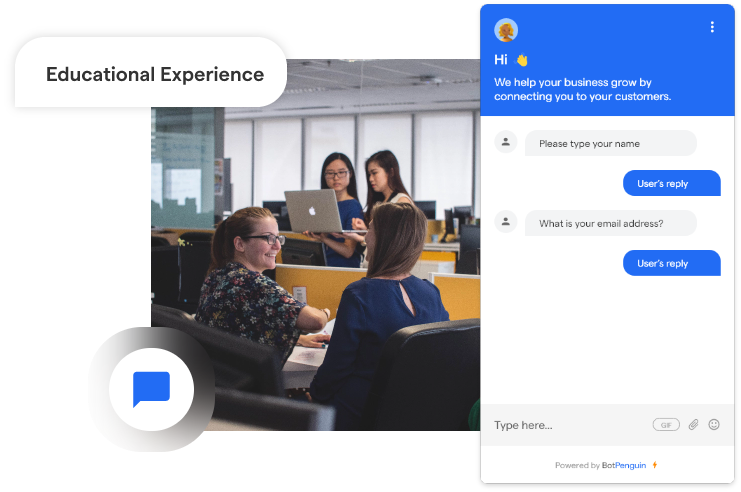
Definition and functionality of chatbots
Chatbots are built as computer programs to mimic human conversation through text or voice exchanges. They use machine learning (ML) and natural language processing (NLP) techniques to comprehend user inquiries and provide conversational responses.
Imagine them as your neighborly, helpful tutor who is always willing to lend a hand.
Evolution of chatbots in education
In the field of education, chatbots have advanced significantly. At first, they were mainly employed for administrative jobs like giving out information or responding to frequently requested queries.
Chatbots now provide tailored learning experiences, immediate feedback, and even virtual teaching help, thanks to technological improvements.
Benefits of using chatbots in educational settings
Now, you might be wondering why all the hype around chatbots in education. Well, let me break it down for you:
- Enhanced student engagement and interaction
Chatbots provide a dynamic and interactive learning experience for students.
Chatbots can engage learners in meaningful conversations, ask questions, and provide instant feedback. Doing this makes the learning process more engaging and enjoyable.
BotPenguin educational chatbots provide omnichannel live chat. This feature would help students to have all the conversations in one place.
- Personalized learning experiences
Every student is unique, and chatbots recognize that. They can adapt to individual learning styles, preferences, and pace.
Chatbots can provide personalized recommendations, resources, and guidance tailored to each student's needs.
- 24/7 availability and support
Unlike human teachers who need rest, chatbots are available round the clock.
Students can access information, ask questions, and seek assistance anytime. They don't have to wait for office hours or worry about time zone differences.
- Reducing administrative workload for educators
Teachers or professors have a lot on their plates, from lesson planning to grading homework.
Chatbots might lessen some of the administrative strain by automating repetitive duties like answering common questions, delivering course materials, and even grading easy assignments.
Why are Chatbots Important in Education?
In this section, we'll see the importance of chatbots in education.
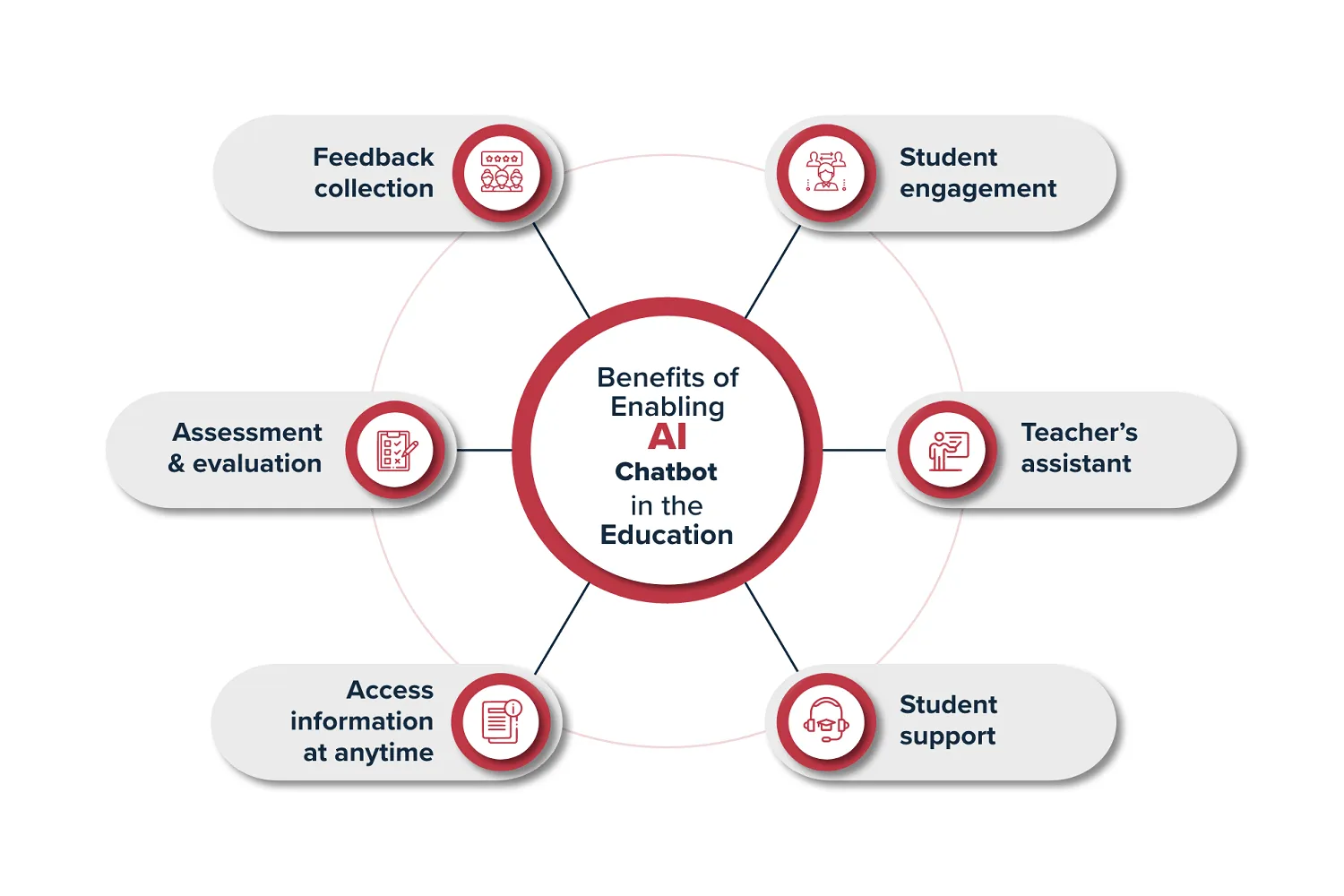
Enhancing student engagement and interaction
Traditional learning environments frequently have trouble keeping students interested.
On the other hand, chatbots provide a conversational and interactive learning environment. It can grab students' attention and promote active engagement.
Personalized learning experiences
Each learner has unique abilities, limitations, and learning methods. Chatbots can adjust to these particular needs and offer individualized recommendations, resources, and support tailored to each student's needs.
24/7 availability and support
Due to online and remote learning growth, students now need access to educational resources and help outside of regular class hours.
Due to their constant accessibility, chatbots allow students to request help and get knowledge whenever needed.
Reducing administrative workload for educators
Teachers frequently find themselves overburdened with administrative work. Doing this leaves them with less time to teach.
Chatbots can automate typical administrative duties to give teachers more time to focus on instructing and mentoring students. Such duties include responding to frequently asked queries, distributing course materials, and grading papers.
Suggested Reading:
Who Can Benefit from Chatbots in Education?
In this section, we'll see who can benefit from chatbots in education.
Students
The students have the following benefits from the chatbots:
- Improved access to information and resources
Chatbots act as virtual librarians, providing students with instant access to information and educational resources.
Whether finding relevant articles, accessing digital textbooks, or exploring online databases, chatbots can help students navigate the vast sea of knowledge.
- Individualized learning paths
Every student, irrespective of age, has unique learning needs and preferences. Chatbots can analyze student data, such as performance records and learning styles, to create personalized learning paths.
By recommending tailored resources and activities, chatbots empower students to learn at their own pace and in their preferred way.
- Instant feedback and assessment
Gone are the days of waiting anxiously for graded assignments. Chatbots can provide instant feedback on quizzes, assignments, and practice exercises.
This immediate feedback helps students identify areas for improvement and reinforces their learning in real time.

Educators
The educators have the following benefits from the chatbots:
- Automated administrative tasks
Educators often find themselves buried under a mountain of administrative tasks. Chatbots can automate routine administrative duties, such as answering frequently asked questions, providing course materials, and managing schedules.
This chatbot automation frees up valuable time for educators. So that they can focus on teaching and mentoring students.
- Data-driven insights for personalized instruction
Chatbots can collect and evaluate data on student performance, engagement, and learning habits.
By utilizing this data, teachers can learn important information about the unique needs of each student and adjust their instruction.
This data-driven approach helps educators provide targeted support and interventions to maximize student success.
- Time-saving benefits
With chatbots handling administrative tasks and providing instant feedback, educators can save precious time.
This extra time can be utilized for lesson planning, curriculum development, and professional growth.
Ultimately, chatbots enable educators to be more efficient and effective.
To avail of all the benefits listed above join hands with BotPenguin, the home of chatbot solutions, and your ladder to creating a successful automation for education services.
With all the heavy work of chatbot development already done for you, move forward to setting up a top-notch chatbot for your education business with features like:
- Marketing Automation
- WhatsApp Automation
- Customer Support
- Lead Generation
- Facebook Automation
- Appointment Booking
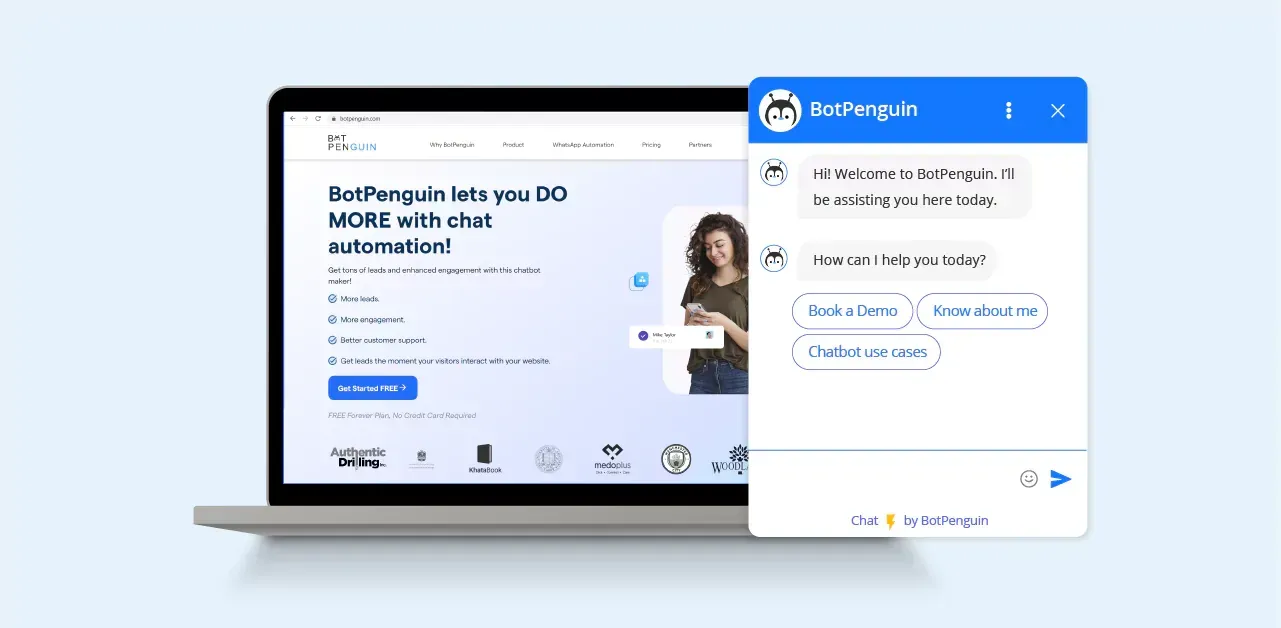
How Do Chatbots Work in Education?
In this section, we'll see how chatbots work in education.
Natural Language Processing (NLP) and Machine Learning (ML)
Chatbots rely on NLP and ML algorithms to understand and respond to user queries.
NLP enables chatbots to interpret and process human language, allowing for natural and conversational interactions.
ML algorithms enable chatbots to learn from user interactions and improve their responses over time. Educational chatbots like BotPenguin provide both NLP and ML-powered virtual bots.
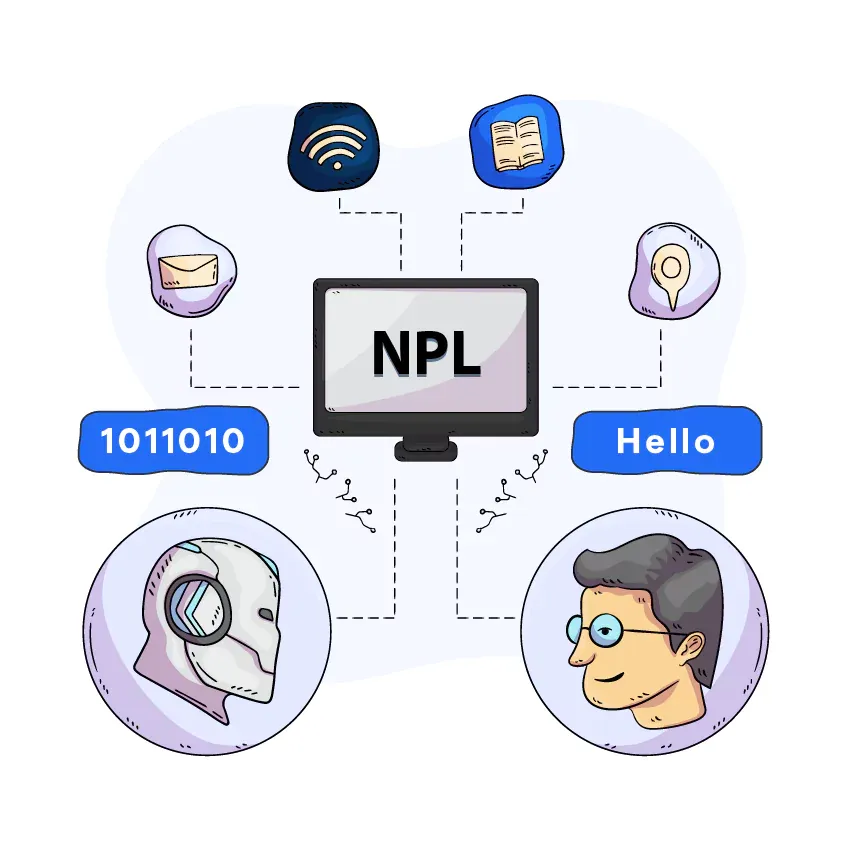
Chatbot architecture and components
Chatbots consist of several vital components, including:
- User Interface
The user interface is the key feature of a platform through which users interact with the chatbot.
It can be a website, a messaging app, or a voice-enabled device.
- NLP Engine
The NLP engine is responsible for understanding and interpreting user queries.
It analyzes the input, identifies the intent behind the query, and extracts relevant information.
- Knowledge Base
The knowledge base, another critical component, is a repository of information the chatbot can access to respond.
It contains various educational resources, FAQs, and other relevant content.
- ML Algorithms
ML algorithms enable chatbots to learn from user interactions and improve their responses over time.
They can identify patterns personalized recommendations, and adapt to individual user needs.
Integration with existing educational platforms and systems
Student information systems (SIS) and learning management systems (LMS) are two examples of educational platforms and systems that can be integrated with chatbots.
To provide a seamless and personalized learning experience, chatbots may access student information, course materials, and other relevant data with this integration.
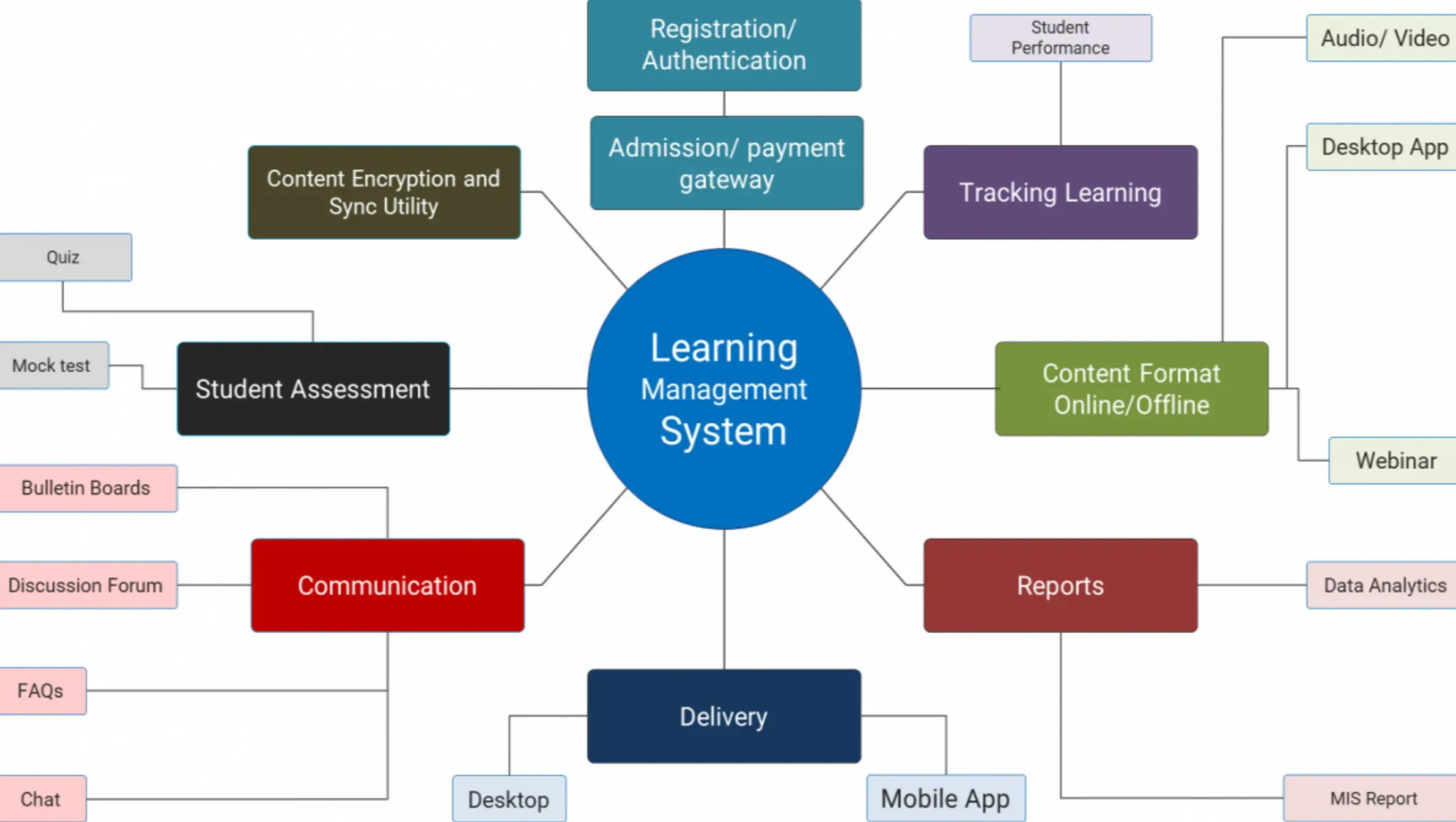
Types of Chatbots in Education
In this section, we'll see the types of chatbots in education.
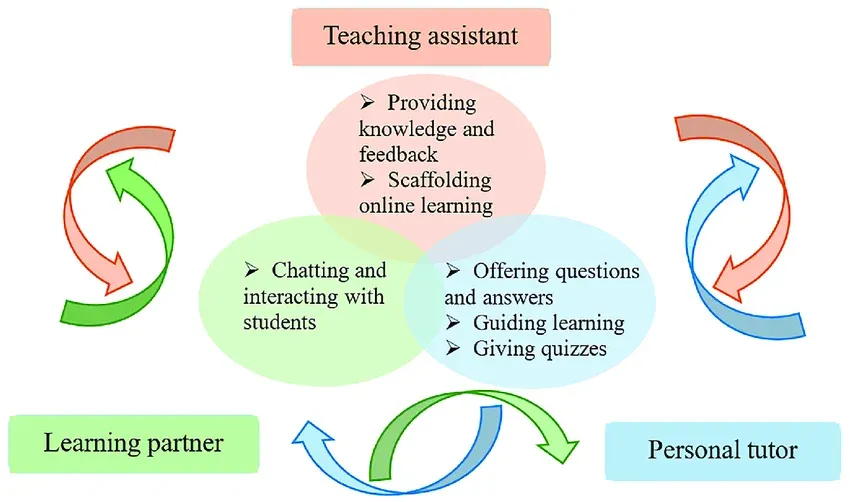
Academic support chatbots
These chatbots act as virtual tutors, providing academic assistance to students. They can answer questions, explain concepts, and guide assignments and projects.
Academic support chatbots are like having a knowledgeable study buddy by your side, ready to help whenever needed.
Virtual teaching assistants
Virtual teaching assistants are teacher aids, supporting educators in various ways. These chatbots can assist with administrative tasks, such as managing schedules and organizing course materials.
Additionally, they can provide real-time feedback to students, grade assignments, and even facilitate discussions. Virtual teaching assistants are the superheroes that lighten the workload of educators.
Career guidance chatbots
Choosing a career path is very overwhelming, but career guidance chatbots help. These chatbots provide information on career options, required qualifications, and potential job prospects. They can also offer personalized advice based on a student's interests, skills, and goals.
Career guidance chatbots are like career counselors in your pocket, guiding you toward a fulfilling professional journey.
Suggested Reading:
5 ways educational chatbots can make students' lives easier!
Language learning chatbots
Learning a new language is challenging, but language-learning chatbots make it fun and interactive.
These chatbots engage students in conversations, help with pronunciation, and provide vocabulary and grammar exercises. They can even simulate real-life scenarios to enhance language proficiency.
Language learning chatbots are like language partners, always ready to practice and improve your language skills.
Adaptive learning chatbots
Adaptive learning chatbots are designed to personalize the learning experience for each student.
They analyze student data, such as performance and learning patterns, to create customized learning paths. These chatbots recommend specific resources, adapt to the difficulty level of assignments, and provide targeted feedback.
Adaptive learning chatbots are like personal trainers, tailoring the learning journey to your needs.
Exploring Features: Finding the Ideal Chatbot for Education
To have an ideal chatbot for education, look for these features:
Customization options for specific educational needs
Different educational institutions and settings have unique requirements.
Look for chatbots that offer customization options. It must allow you to tailor the chatbot's functionality, interface, and content to your needs. Customization ensures that the chatbot seamlessly integrates into your existing educational ecosystem.
One of the best examples here would be BotPenguin educational chatbots. These chatbots are highly customizable.
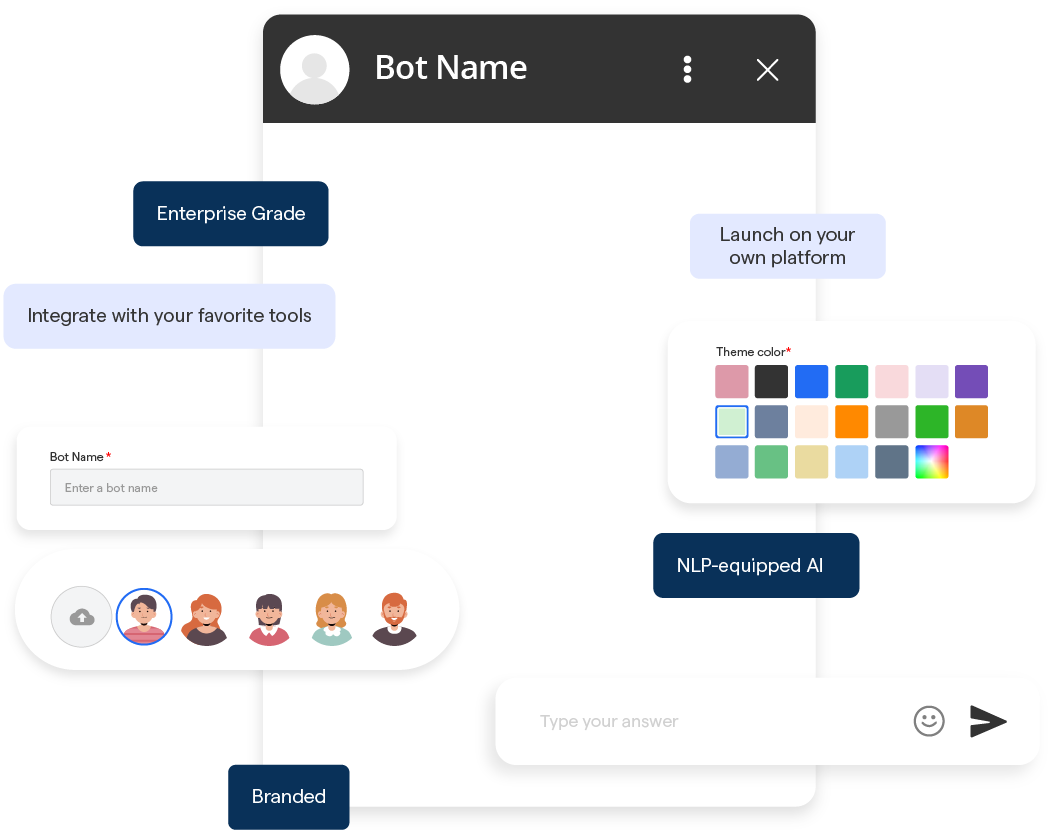
Integration capabilities with learning management systems (LMS)
Integration with your already existing learning management system (LMS) is crucial to maximize the benefits of chatbots. This integration enables the chatbot to access student data, course materials, and other relevant information.
It also ensures a seamless user experience, as students can access the chatbot directly from their LMS platform.
Natural Language Processing (NLP) capabilities
Effective conversation with a chatbot depends on its capacity to comprehend and respond to everyday language.
To find chatbots that can answer complicated questions, comprehend context, and deliver precise and pertinent responses, look for sophisticated NLP skills. More human-like conversations enhance the learning experience.
Multilingual support
In today's diverse educational landscape, multilingual support is a valuable feature.
Look for chatbots that can communicate in multiple languages. It allows students from different linguistic backgrounds to benefit from the chatbot's assistance.
Multilingual support promotes inclusivity and ensures that language barriers do not hinder learning.
Analytics and reporting capabilities
Analytics and reporting capabilities are essential to track the chatbot's effectiveness and monitor student progress.
Look for chatbots that offer information on student performance, engagement, and usage trends. These analytics can aid instructors in making data-driven decisions, pinpointing areas for development, and personalizing education.
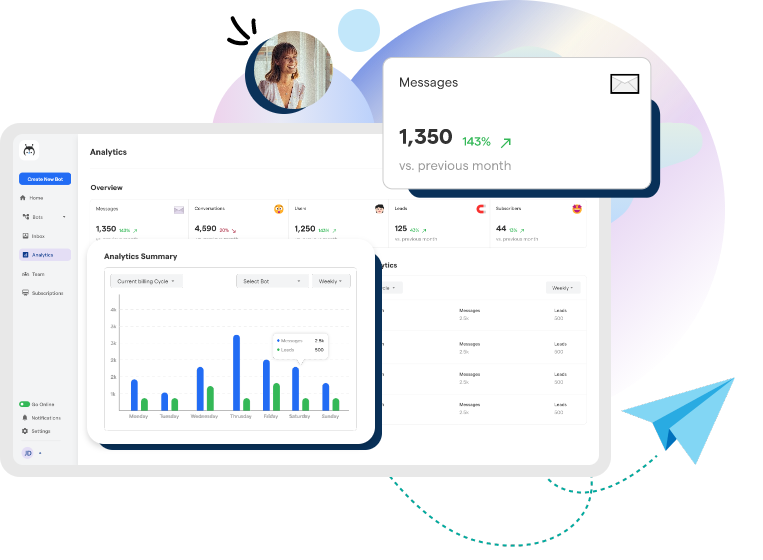
Implementing Chatbots in Educational Institutions
In recent years, chatbots have emerged as a powerful tool in education. Let's explore how to implement chatbots in educational institutions.
Enhancing Student Support Services
To enhance student support services, follow these:
- Personalized Assistance
The capacity of chatbots to offer pupils individualized support is one of their main advantages in the educational setting.
Chatbots can respond to often-requested inquiries, offer course advice, and provide academic help.
Chatbots can comprehend student questions and give pertinent, accurate answers by utilizing natural language processing and machine learning techniques.
- 24/7 Availability
Unlike human support staff, chatbots are available round the clock. Students can seek assistance at any time, even outside regular office hours.
Whether it's clarifying doubts about assignments or accessing resources, chatbots ensure that students have access to support whenever they need it.
- Emotional Support
Chatbots can also play a role in providing emotional support to students. They can offer encouragement, motivation, and guidance during challenging times.
By creating a safe and non-judgmental space for students to express their concerns, chatbots can help alleviate stress and promote mental well-being.
Suggested Reading:
Streamlining Administrative Processes
To streamline the administrative process, follow these:
- Admissions and Enrollment
Chatbots can simplify the admissions and enrollment process for students and administrative staff.
They can provide information about application requirements, deadlines, and procedures.
Additionally, chatbots can assist with form filling, document submission, and fee payment.
Chatbots for education also reduce the administrative burden on staff and ensure a smooth and efficient process for students.
- Course Registration and Scheduling
Navigating course registration and scheduling can be a complex task for students.
Chatbots can guide students through the process, helping them select appropriate courses, check for conflicts, and create a balanced schedule.
It saves time and ensures students make informed decisions about their academic journey.
Revolutionizing Education with Chatbot Success Stories
Let's look at some case studies of education chatbot's success stories.
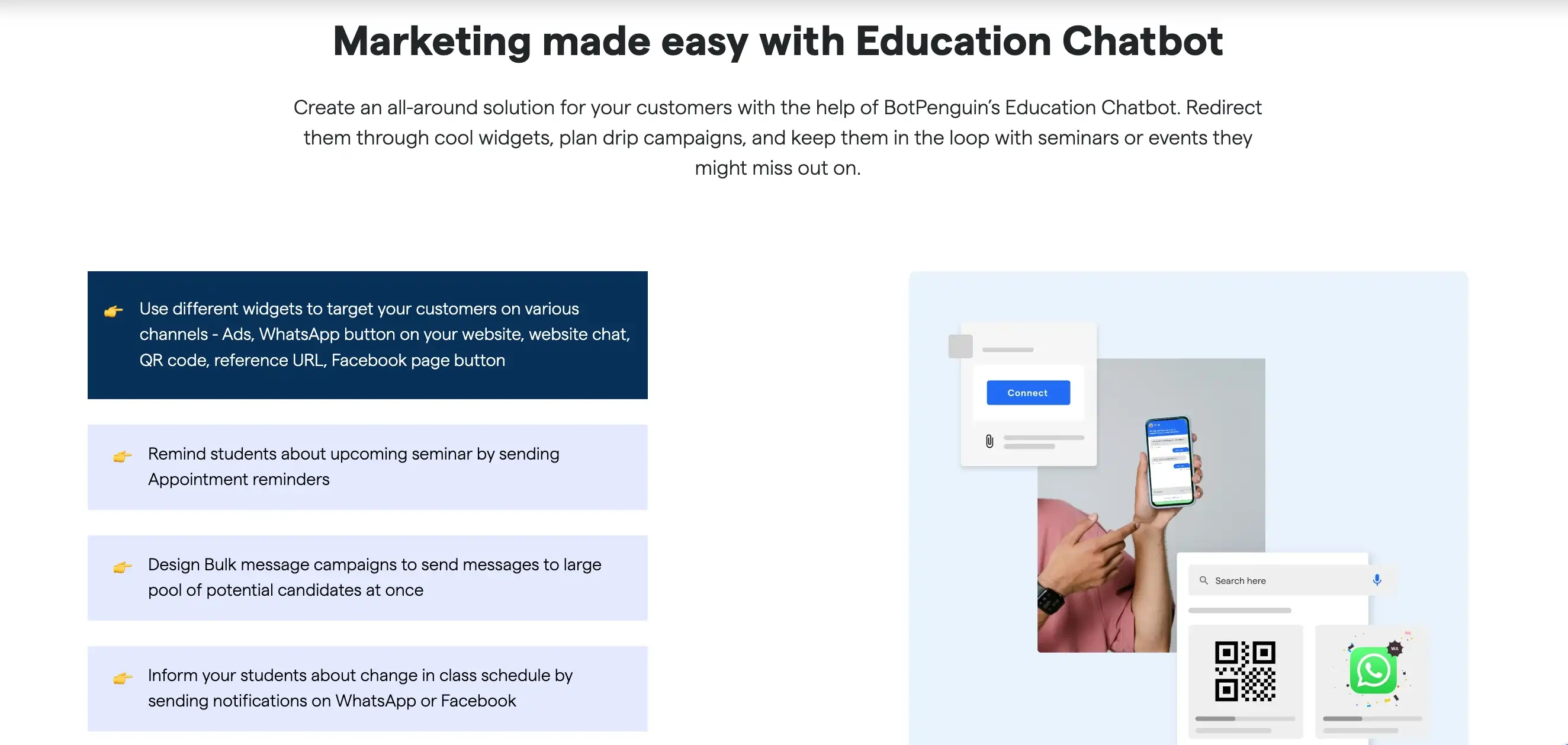
Case Study 1: Virtual Teaching Assistant
Duolingo, a popular language learning platform, integrated chatbots into its app to enhance language learning experiences.
The chatbots engage users in interactive conversations. It helps them practice speaking, listening, and writing in the target language. These chatbots provide real-time feedback and corrections, making language learning more effective and engaging.
Duolingo's chatbots have particularly benefited language learners who want to improve their conversational skills. The platform's gamified approach combined with chatbot interactions has revolutionized language education. Doing this will make it accessible and enjoyable for millions of users worldwide.

Case Study 2: Administrative Support
Georgia State University used the chatbot Pounce to improve student retention and success. Pounce personalized reminders and walk students through school processes, such as submitting FAFSA applications and completing pre-enrollment tasks.
As a result, Georgia State University reduced summer melt by 19% and increased the percentage of students completing pre-enrollment processes.
Case Study 3: Emotional Well-being
MindfulBot is a chatbot that helps students develop mindfulness and emotional intelligence. MindfulBot is effective in reducing stress, anxiety, and depression in students, as well as improving their overall well-being.
One example of MindfulBot's success is at the University of California, Berkeley. Berkeley students who used MindfulBot for six weeks significantly improved their mindfulness and emotional intelligence scores. They also reported feeling less stressed and more anxious and depressed.
Challenges and Limitations of Chatbots in Education
In this section, we'll see the challenges and limitations of chatbots in education.
Limited Understanding of Complex Queries
While chatbots have significantly advanced natural language processing, they still struggle with understanding complex queries or nuanced language.
Students may sometimes require in-depth explanations or have questions beyond the capabilities of chatbots. In such cases, human intervention may still be necessary to provide support.
Lack of Emotional Intelligence
Chatbots, being AI-driven systems, lack emotional intelligence. They cannot empathize with students or understand their emotional state.
While they can provide factual information and guidance, they may not be able to offer the same level of emotional support as a human counselor or mentor.
It is essential to balance the convenience of chatbots and the need for human connection in education.
Technical Limitations and Accessibility
Not all students can access the necessary technology or internet connectivity to interact with chatbots effectively. It can create a digital divide and limit the reach and effectiveness of chatbot-based educational support.
Additionally, technical glitches or system failures can disrupt the chatbot experience, causing frustration for both students and educators.
Conclusion
In conclusion, chatbots have emerged as a valuable tool in education. They unlock new possibilities and transform how students learn and interact with educational institutions.
Chatbots for education offer personalized assistance, 24/7 availability, and streamlined administrative processes. Doing this makes education more accessible and efficient.
However, it is essential to acknowledge the challenges of education chatbots. Such as their limited understanding of complex queries and their need for emotional intelligence. While chatbots can provide support and information, they cannot replace the human connection and empathy educators and counselors offer.
BotPenguin, an innovative chatbot solution, revolutionizes education by providing students with personalized, interactive, 24/7 support. With its intelligent algorithms, it tailors learning experiences, offers instant answers to queries, and engages students through gamified activities.
BotPenguin facilitates language learning, automates assessments, and assists teachers in lesson planning and grading tasks. Moreover, it ensures accessibility for special needs education, analyzes valuable student data, and enhances parent-teacher communication.
BotPenguin empowers educators, supports students, and transforms learning environments by seamlessly integrating technology into education, making education more engaging, efficient, and accessible.
We expect chatbots to play an increasingly significant educational role as technology evolves. So, let's embrace the possibilities and unlock the full potential of chatbots in education!
Frequently Asked Questions (FAQs)
What are chatbots in education?
Chatbots in education are AI-powered virtual assistants designed to support and assist students and educators. They can answer questions, offer guidance, and streamline administrative processes, enhancing the learning experience.
How can chatbots benefit students in education?
Chatbots benefit students by providing instant access to information and resources, offering personalized learning paths, and instant feedback and assessment on assignments and quizzes.
What advantages do chatbots offer to educators?
Educators can benefit from chatbots by automating administrative tasks, gaining data-driven insights for personalized instruction, and saving time for lesson planning and professional growth.
What types of chatbots are used in education?
Educational chatbots include academic support, virtual teaching assistants, language learning, and adaptive learning chatbots.
Can chatbots understand complex queries?
While chatbots have advanced in understanding natural language, they may still need help with complex queries requiring in-depth explanations or nuanced understanding.


